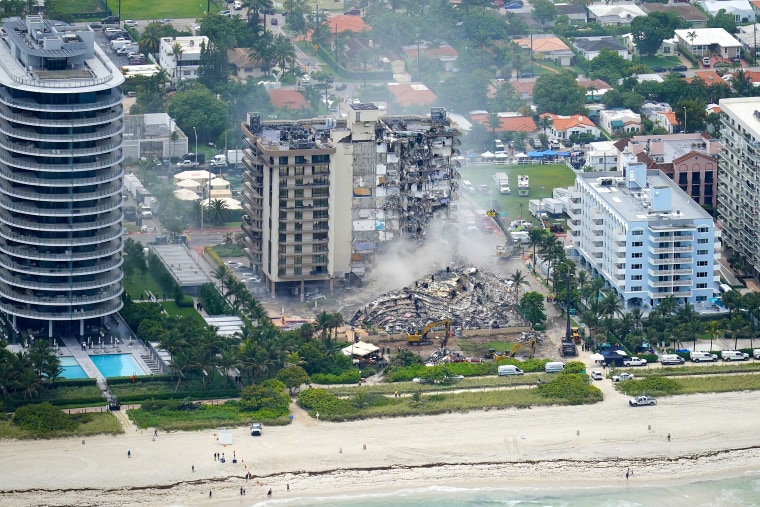The round-the-clock pace for emergency crews in South Florida to find victims pinned beneath mountains of concrete and pulverized debris from a partially collapsed condo tower may resume for days or even weeks.
As that laborious process plays out, another challenge presents itself: identifying the bodies. Officials said Friday that DNA swabs were taken from family members of missing loved ones to help confirm identities.
"They've all offered their DNA for matching," Miami-Dade County Mayor Daniella Levine Cava said on MSNBC. "There are photographs. And as soon as a person is identified through our victim advocates, through our medical examiner's office, the first to be notified will be next of kin."
As of Friday afternoon, at least four people were confirmed dead in early Thursday's disaster, Levine Cava said. Another 159 people remain unaccounted for, although not all may have been home when a portion of the 12-story Champlain Towers South in the oceanfront community of Surfside imploded. The cause of the collapse is still being determined.
Forensic experts say the nature of the catastrophe — and that it didn't involve an explosion or fire — should make examining the recovered bodies easier.
Robert Allen, a professor of forensic sciences at Oklahoma State University's Center for Health Sciences, said that although the deceased will have suffered extensive injuries, their bodies would presumably be identifiable.
During 9/11, in which human remains are still being identified nearly 20 years later, "you had intense heat, intense pressure that dramatically accelerated the decomposition of the biological materials," Allen said. "In this case, the DNA will be fully intact."
Allen also compared the process to identifying victims of plane crashes, and said that certain methods, like the matching of dental records and fingerprints, can help in cases where there's no familial DNA available to immediately compare.
Angie Ambers, a forensic DNA expert and assistant director at the Henry C. Lee Institute of Forensic Science in Connecticut, said the use of DNA technology will become even more crucial if the process of recovering victims drags on.
Soft tissue, which makes visual identification and fingerprinting possible, can decompose, especially when exposed to the high heat and humidity of South Florida.
"This is where DNA testing will become an invaluable tool in the investigation," Ambers, an associate professor of forensic science at the University of New Haven, said.
She added that it will be important for investigators to have close, first-degree family members like parents, siblings or children, who can submit their DNA.

Given that there may be out-of-state or international victims who were in the building, "the logistics of obtaining family reference samples and making positive identifications will be more challenging," Ambers said.
Another option, Ambers said, is so-called Rapid DNA machine technology that can be used in the field and has helped confirm victims of disasters, including the 2018 Camp Fire in Northern California that killed 85 people. In that case, such analysis provided identifying information in under two hours.
"This is a horrible tragedy," Ambers added. "Providing answers and closure to families as quickly as possible is a priority."

